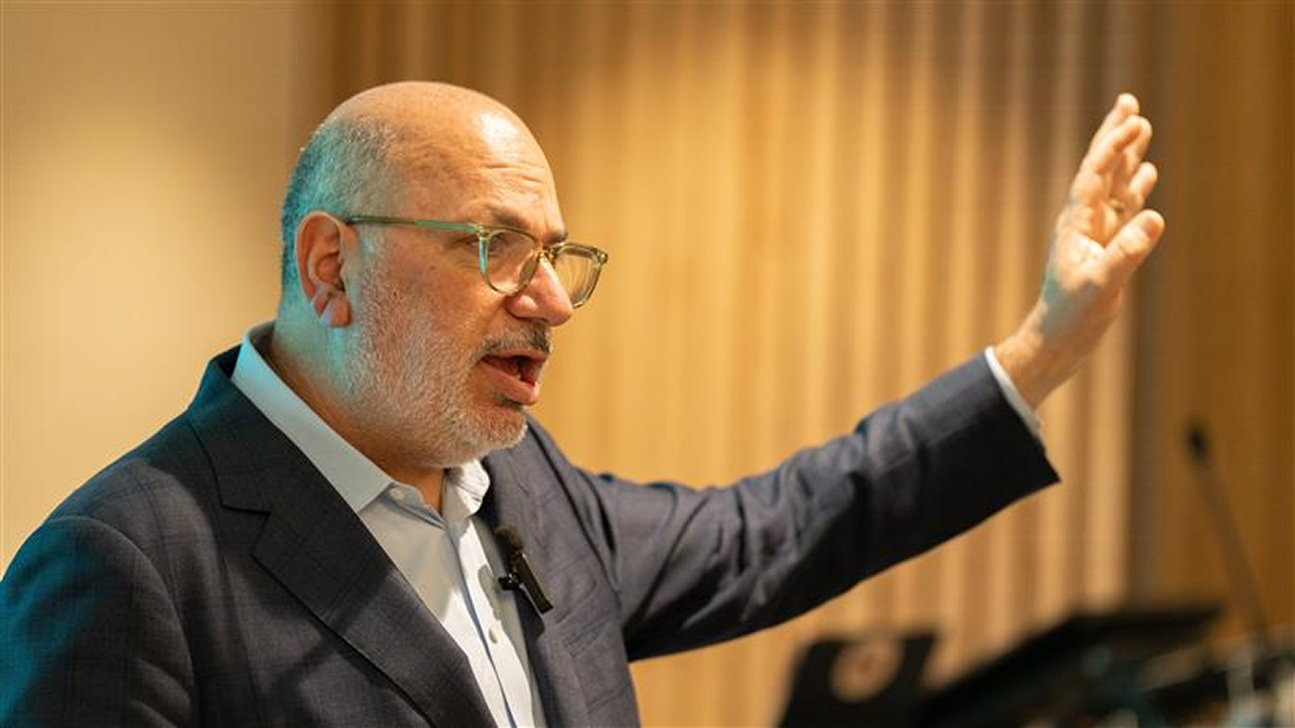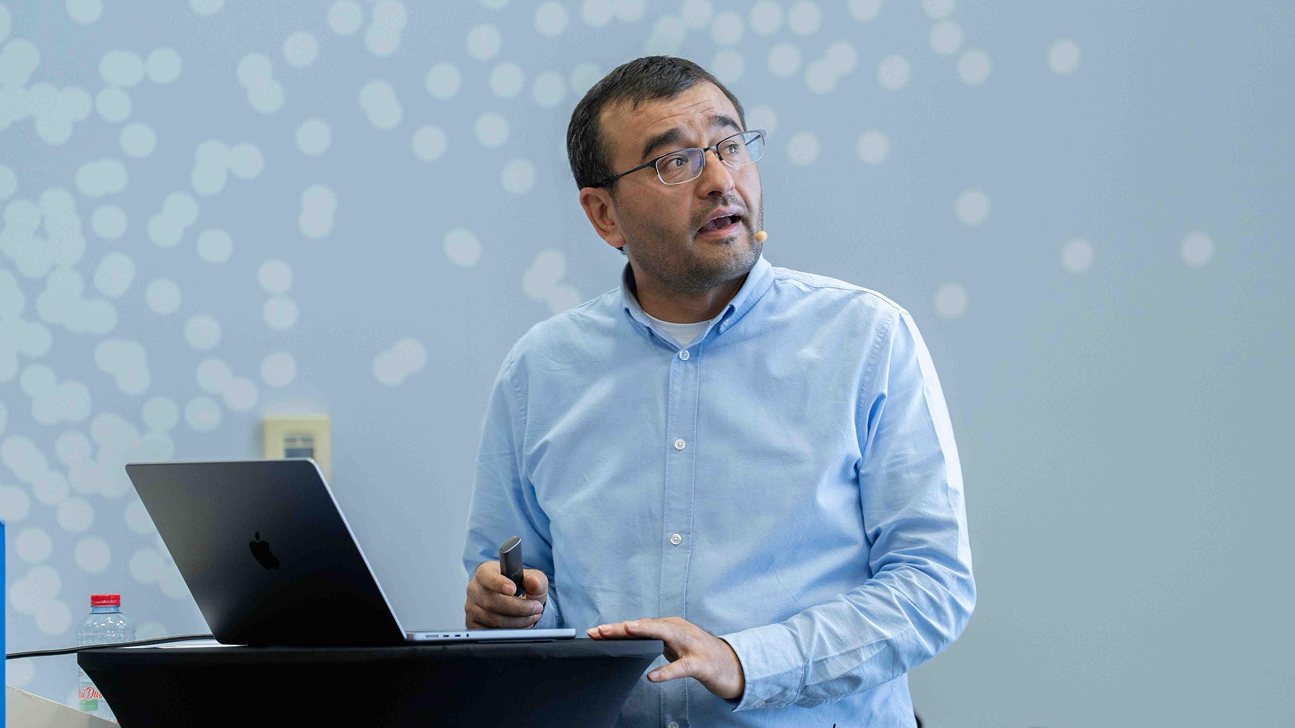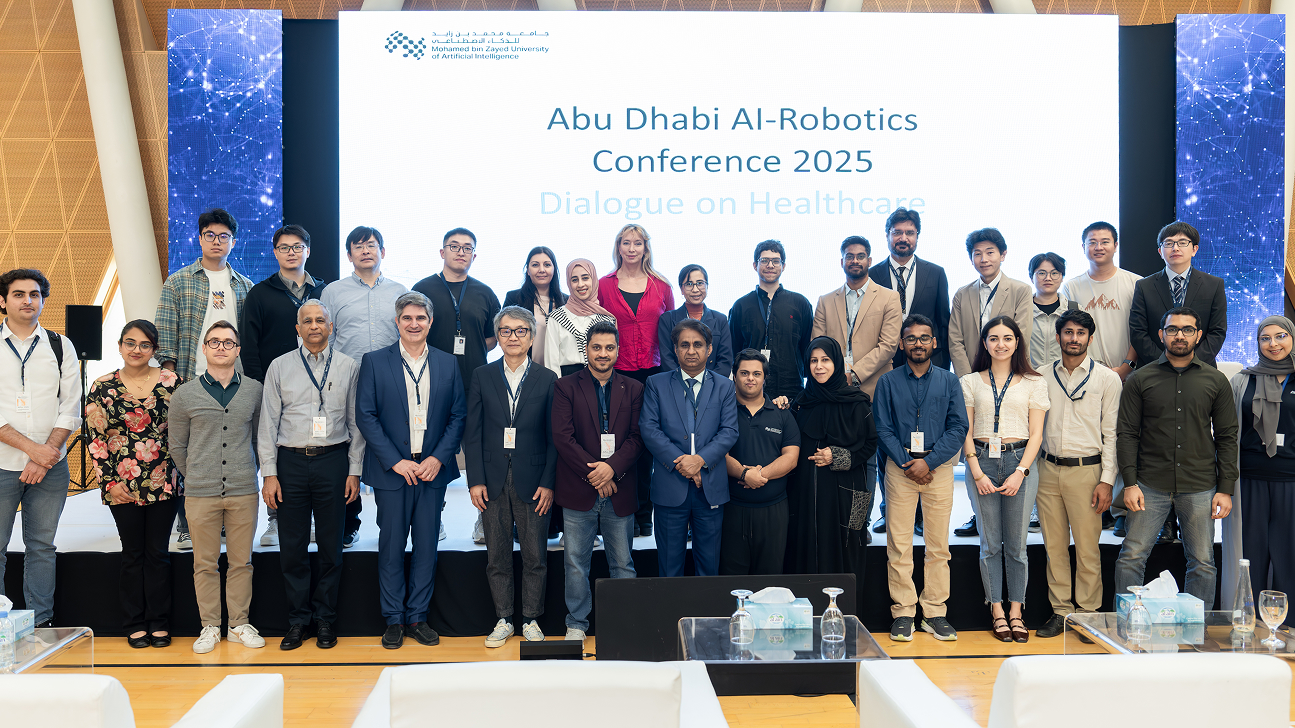MBZUAI brings bioinformatics community together for Single Cell Summer Workshop
Wednesday, June 04, 2025
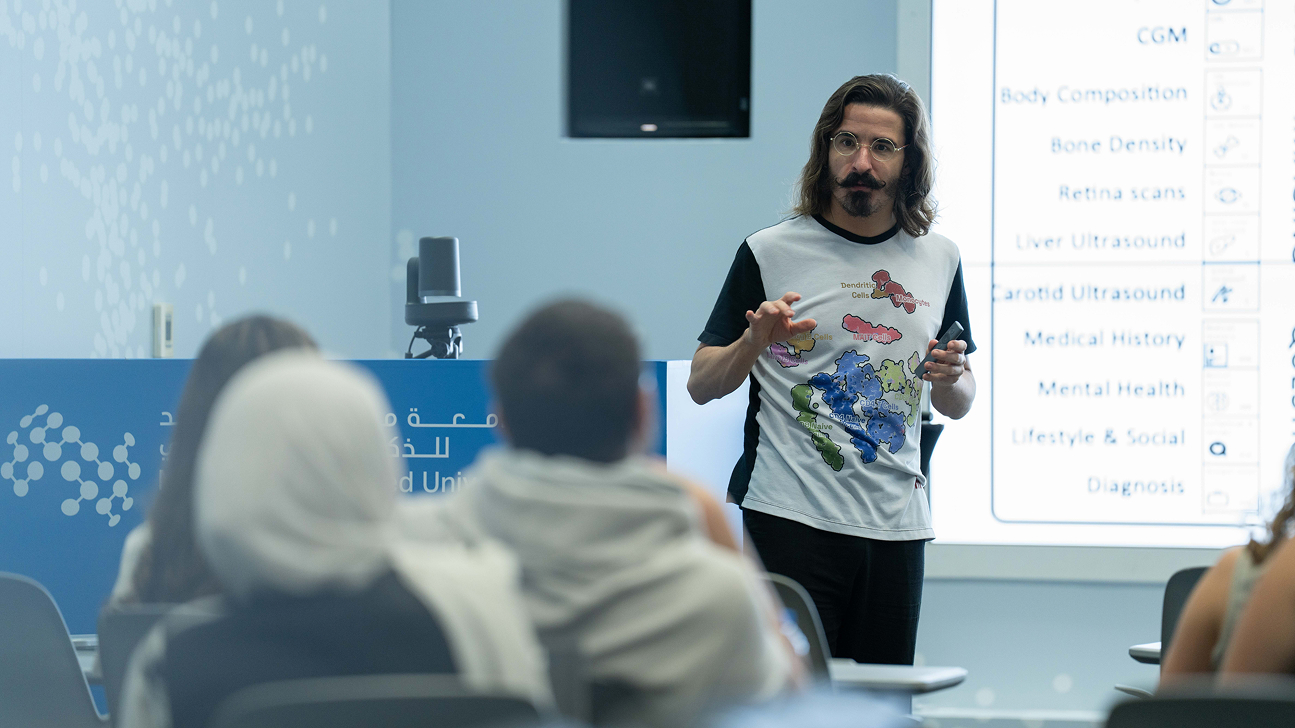
The UAE’s bioinformatics community gathered at MBZUAI for a wide-ranging exploration of single cell omics data, as the University’s Computational Biology department hosted it’s first Single Cell Summer Workshop.
Hosted by MBZUAI’s Assistant Professor of Computational Biology, Eduardo Beltrame, and visiting Ph.D. student, Luiz Maniero, the two-day workshop took place at MBZUAI’s Masdar City campus, welcoming more than 25 participants and speakers. Designed to develop practical bioinformatics skills, discuss some of the field’s most important topics, and strengthen the regional bioinformatics ecosystem, the event featured three workshops, nine talks, and ample opportunity for networking.
“We organized this workshop to help build capacity and to connect people in the region working on single cell omics,” says Beltrame. “It was also a great opportunity for our students to interact with more researchers in the field. Earlier this year I taught our department’s first course, ‘Introduction to Single Cell Biology and Bioinformatics’, and this was the perfect time to widen our community’s network.
“As well as the workshop sessions themselves, we had a series of short talks from the participants. The goal was not only for people to learn new tools and pipelines, but also learn what other people were working on and foster collaborations.”
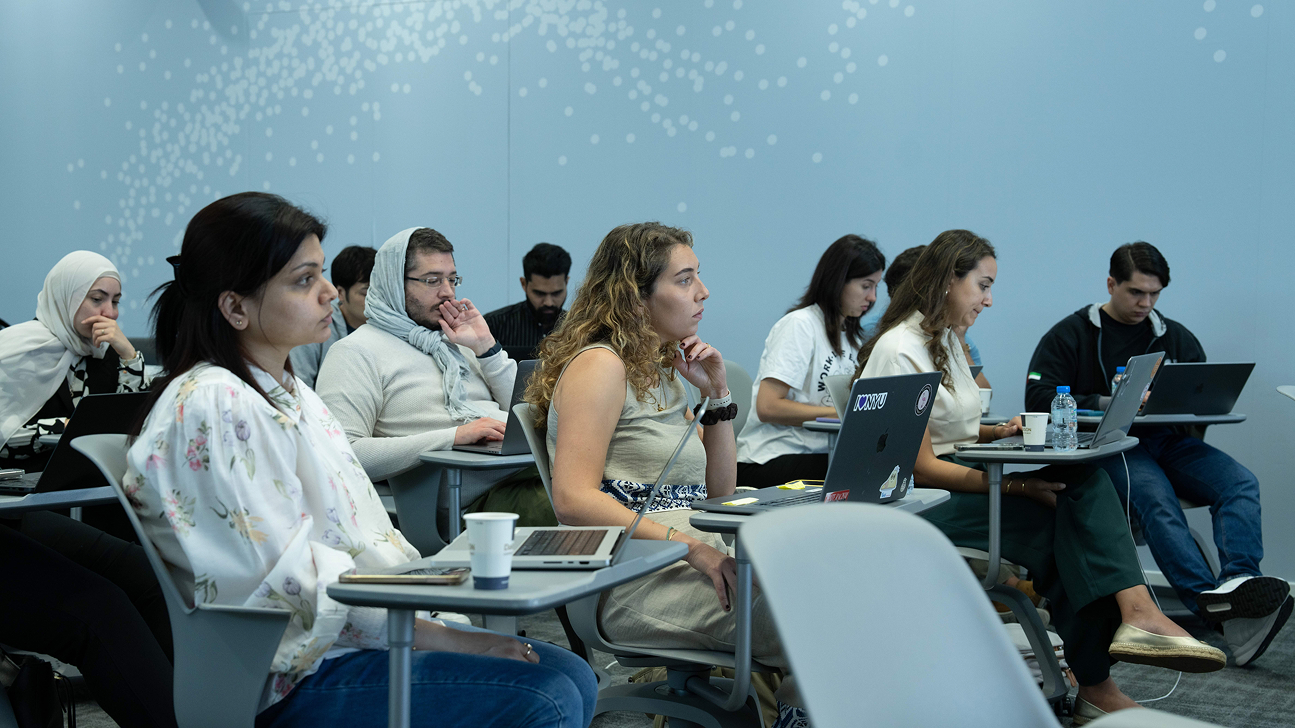
Building capacity
At the heart of the two-day event were three workshops hosted by Beltrame, Mariano Gabitto of the Allen Institute, and Luke Zappia of Data Intuitive.
Beltrame opened the workshop with a session entitled ‘Introduction to single cell omics analysis with the scvi-tools framework’, followed by Gabitto’s workshop, ‘Multimodal machine learning for the analysis of multiple omics modalities’, which introduced probabilistic models including the variational auto encoder framework; multiple models that achieve data fusion across modalities; and deep generative models designed for the analysis of single-cell chromatin, transcriptional and protein expression information.
On day two, after a series of short participant talks, Zappia presented ‘Open Problems in single cell analysis – creating a new benchmark’.
“Open Problems is an initiative to develop community-led continuous benchmarking on problems in single-cell analysis,” he says. “My workshop introduced Open Problems to the participants and covered some of the technical details of how to contribute to the project. I hope they got a better understanding of what Open Problems is and how it can help with their single-cell research projects.”
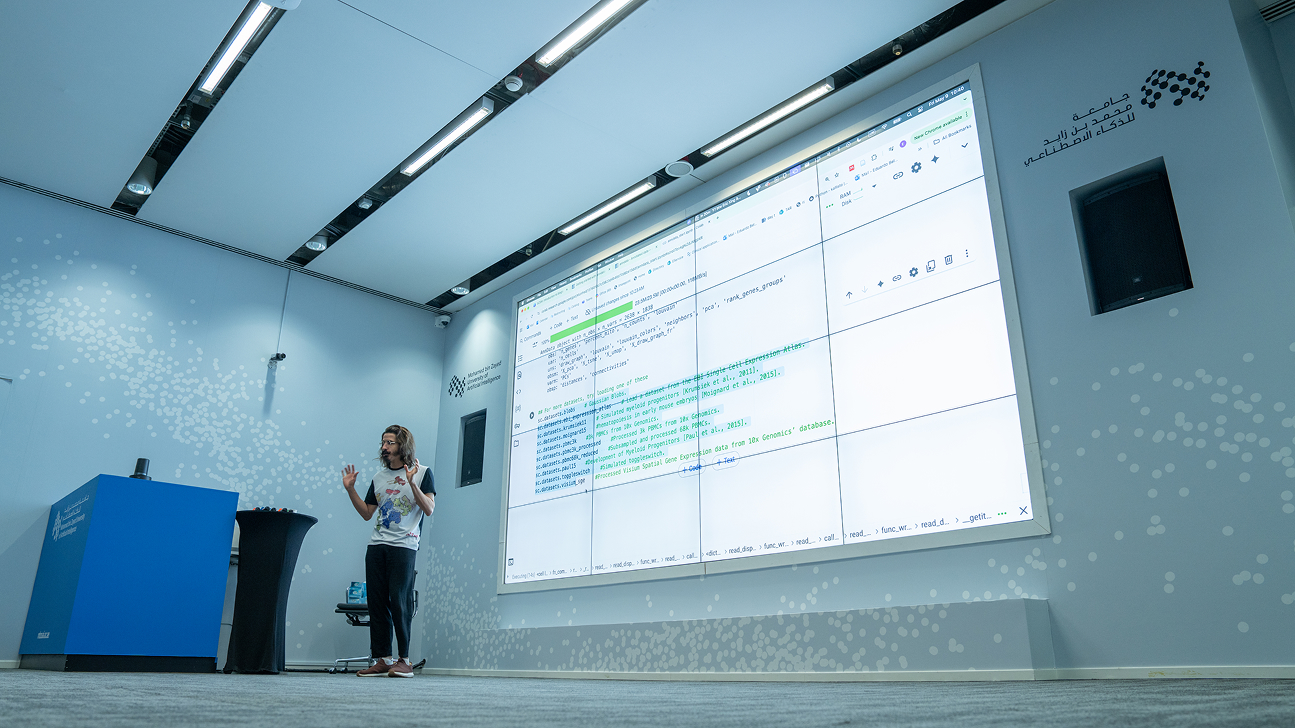
Exploring key topics
Alongside the workshops, the event also featured nine talks on key research taking place in the bioinformatics field, including ‘Modeling the dynamics of cancer using scRNA-seq data’, ‘Epigenetic Disordering Drives Stemness, Senescene Escape and Tumor Heterogeneity’, and ‘Single-cell sequencing in the mouse brain: Insights into circadian rhythms and mood disorders’.
Tala Shahin, postdoctoral associate at NYU Abu Dhabi spoke about ‘Single-cell transcriptomics reveals inter-ethnic variation in immune response to Falciparum malaria’.
“My talk explored how single-cell transcriptomics can uncover immune mechanisms underlying variable susceptibility to malaria in two ethnically distinct populations in West Africa,” she says. “We showed that integrating single-cell data with host genetic variation reveals key differences in immune cell-type specific responses that may explain why one group is less susceptible to malaria.
“I hope participants gained insight into the power of single-cell approaches for studying population-specific immunity and the importance of diverse representation in genomic research.”
Mohammad Kassab, Ph.D. student in computer vision at MBZUAI, spoke about ‘Comparative Analysis of VAE scRNAseq Integration Methods: scI, MrVI, and LDVAE’, a project that was developed during the semester’s course, and is now being refined with feedback from participants.
“The aim of this work is to three variational autoencoder (VAE)-based models – scVI, mrVI, and LDVAE – for their ability to integrate batches in single-cell RNA sequencing (scRNA-seq) data,” he says. “I investigate the effect of hyperparameters on the performance of these models, specifically focusing on latent space dimensions, number of hidden layers, and number of hidden nodes.
“I hope the attendees took away some practical insights into selecting and tuning VAE models for scRNA-seq integration, and a clearer understanding of how integration choices impact downstream analysis.”
Shahin adds that workshops such as this are crucial in building a coherent bioinformatics community that can take the field forward.
“With AI playing an increasingly transformative role in science, staying up to date with emerging tools and methods is more important than ever,” she says. “Workshops like this are essential for bringing the bioinformatics community together to share best practices, troubleshoot common challenges, explore cutting-edge approaches, like scVI, and foster collaboration across disciplines. They also provide valuable opportunities for mentorship, discussion, and bridging the gap between computational innovation and biological application.”
Making magic
Looking back on the successful workshop, Beltrame is happy to have brought together a group of students and researchers with a variety of skills, believing that this is the key to individual and collective progress.
“Science is a fundamentally social endeavour,” he says. “This is especially true in experimental sciences such as biology, where making progress requires bringing people with different expertise together.
“We had participation from researchers with a very strong biological experimental background who are generating high-quality scientific data, as well as participation from our MBZUAI community, which is very strong in computational aspects.
“This is how to do interdisciplinary scientific research. We wanted to teach and expose people to different languages, different toolsets and different cultures to what they are used to. That’s when magic happens.”
Beltrame and the rest of the Computational Biology department, which is housed under the newly created MBZUAI School of Digital Public Health, aim to host similar workshops in the near future.
“We expect to run more workshops in the fall, and in October the School of Digital Public Health will organize another Symposium,” he says, adding that the department will also launch its master’s and Ph.D. programs in 2026.
“These will be among the very few master’s and Ph.D. programs of their kind in the Gulf region, which is a big responsibility. I strongly believe we have everything we need to succeed and help lead the UAE in forming the next generation of leaders in computational biology.”
Related
Reimagining AI design for a more human-centered future
Speaking at MBZUAI’s campus, Stanford’s James Landay explained why we must design AI systems at three levels.....
- Research talks ,
- Human–computer interaction ,
- HCI ,
- human-centered design ,
- human-centered AI ,
- AI for good ,
- Stanford ,
- design ,
Building genomics research skills with Data Carpentry
Aziz Khan of MBZUAI’s Computational Biology department hosted the UAE’s first Data Carpentry workshop to enhance genomics.....
- institute of digital public health ,
- research ,
- computational biology ,
- data ,
- workshop ,
- genomics ,
- data carpentry ,
- carpentries ,
- data science ,
Transforming Healthcare with AI-Powered Robotics
The inaugural Abu Dhabi AI-Robotics Conference took place at MBZUAI, exploring the potential for AI-driven robotics to.....
- AD-AIRoC ,
- AIRoC ,
- healthcare ,
- robots ,
- robotics ,
- Intelligent Robots ,
- medicine ,
- campus ,
- conference ,
